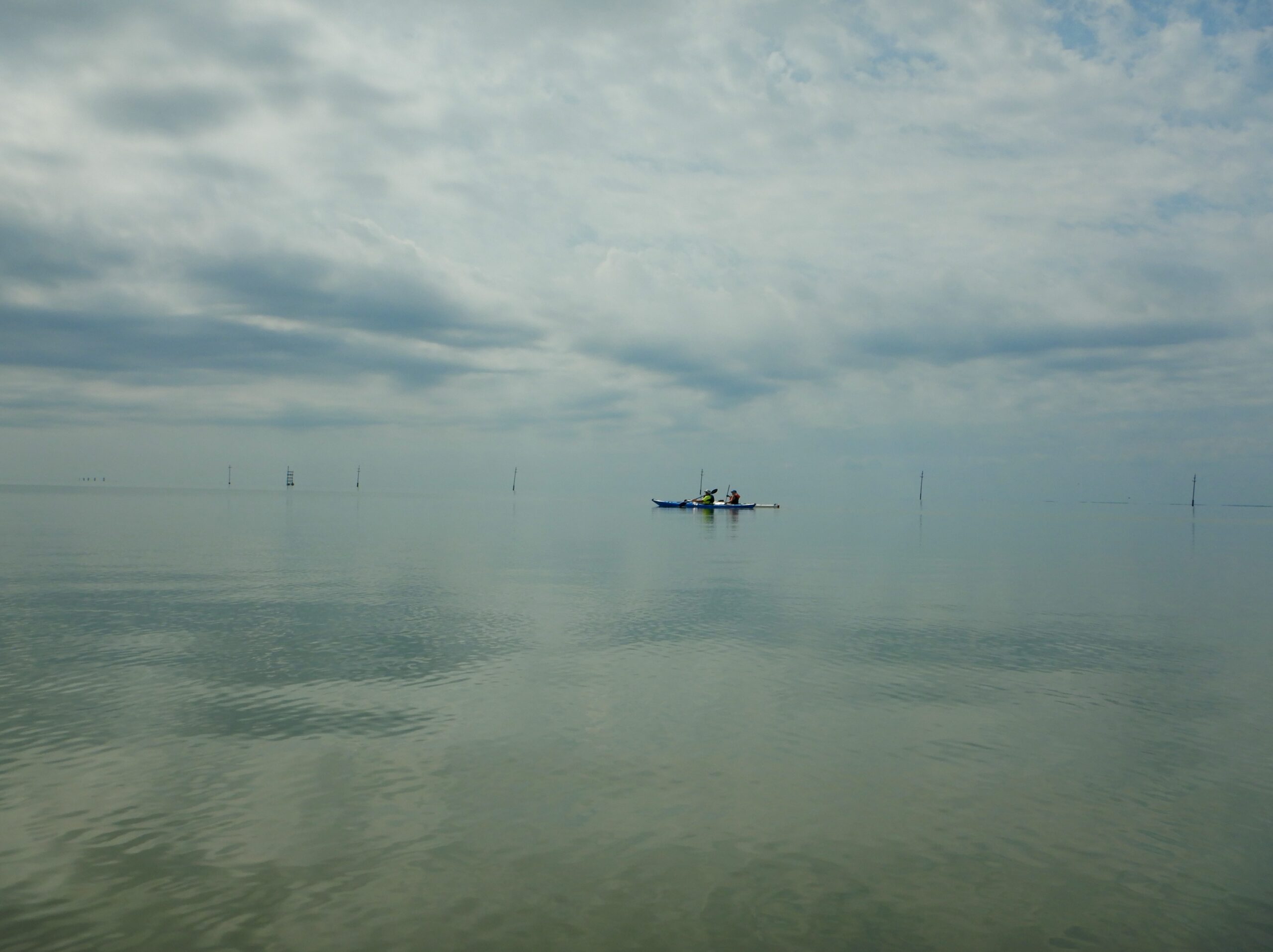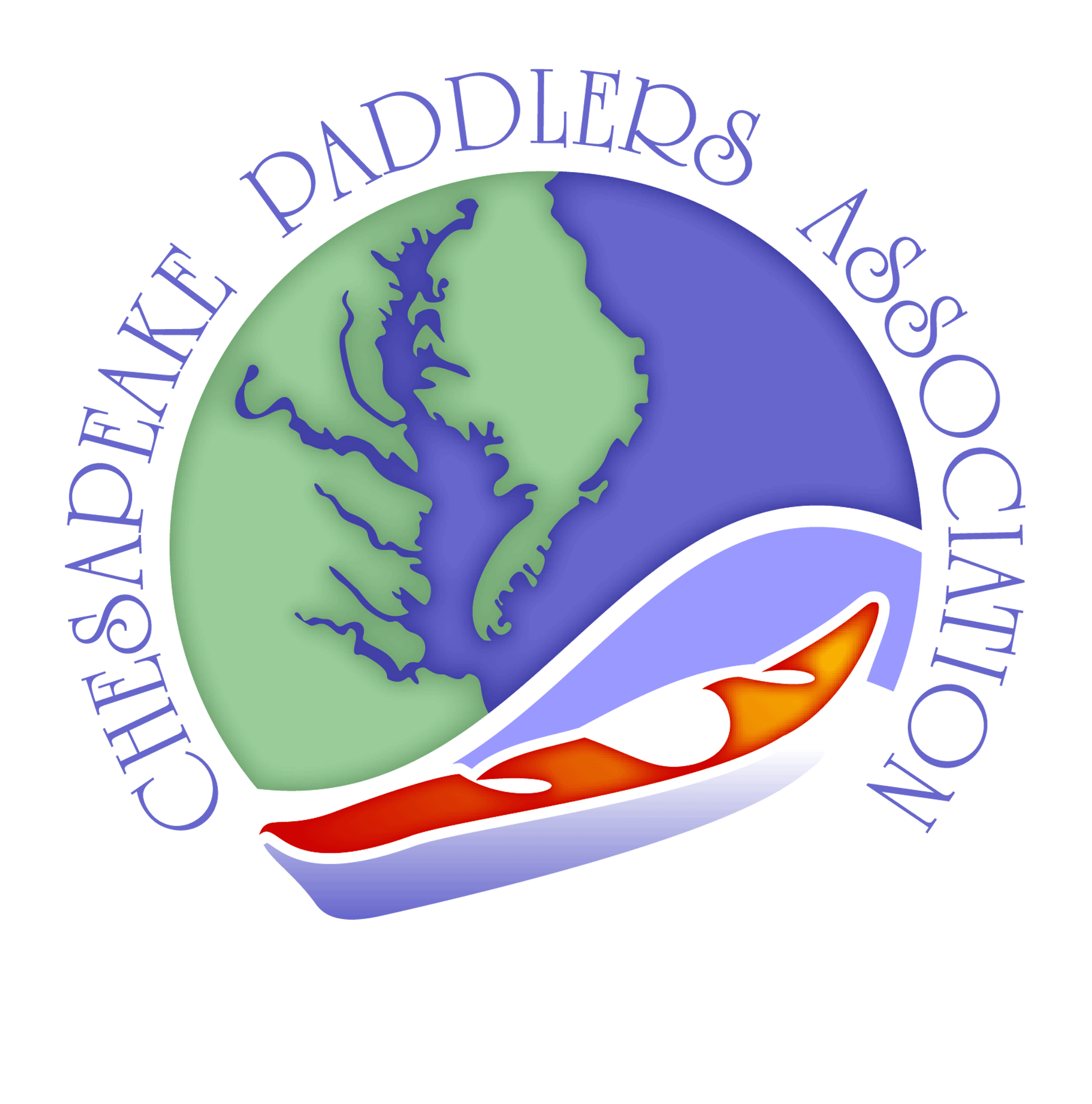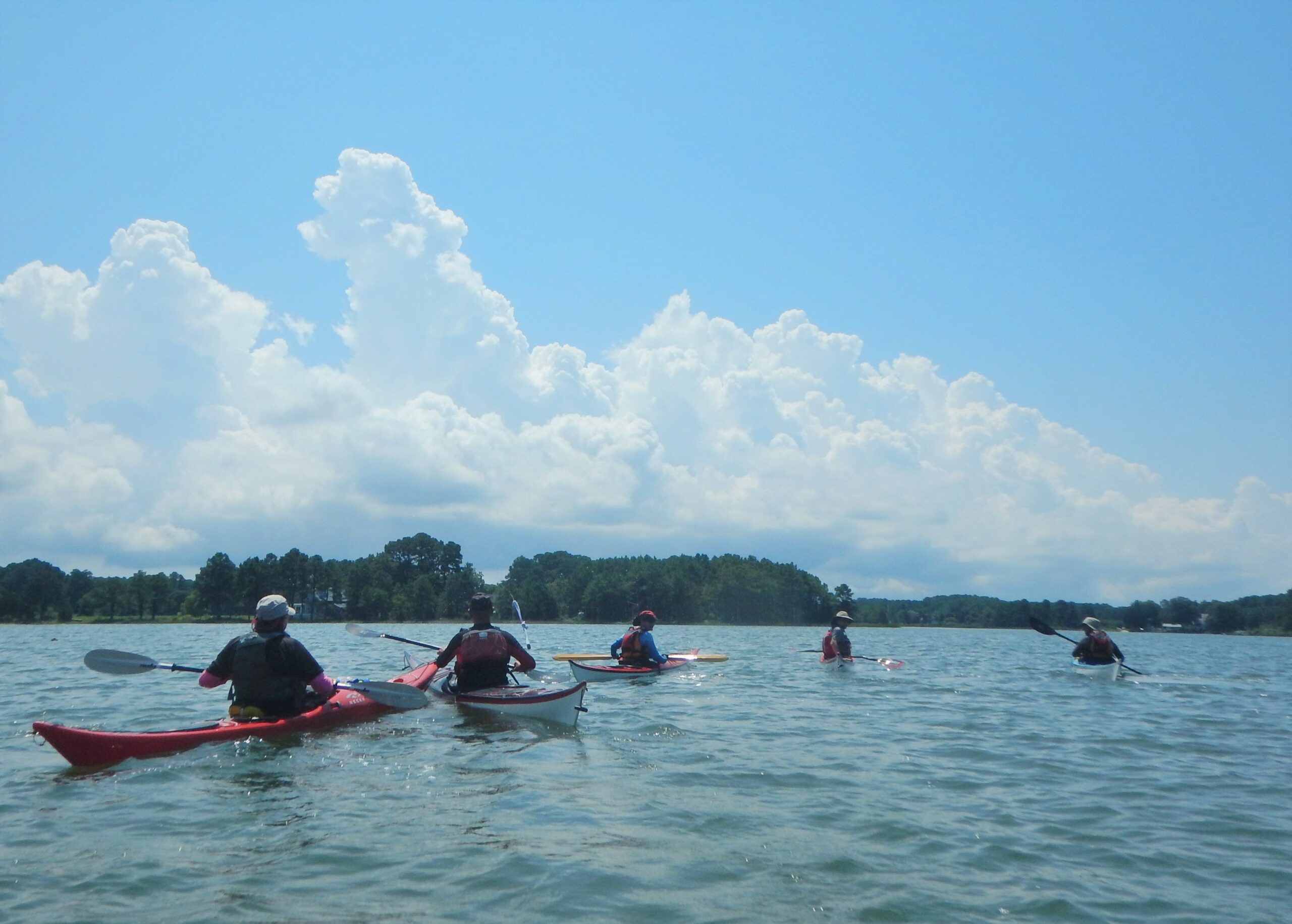 You don’t need to be the fastest paddler to lead a trip. You don’t need to roll to lead a trip. You don’t need to paddle in big conditions to lead a trip. You don’t need to be the best paddler to lead a trip. What you do need is the willingness to plan paddles, share places where you like to paddle, and be willing to work with your paddling group to have a day on the water that is enjoyable for everyone. Not needing to manage incidents is evidence of success (but of course you should be able to manage incidents if needed).
You don’t need to be the fastest paddler to lead a trip. You don’t need to roll to lead a trip. You don’t need to paddle in big conditions to lead a trip. You don’t need to be the best paddler to lead a trip. What you do need is the willingness to plan paddles, share places where you like to paddle, and be willing to work with your paddling group to have a day on the water that is enjoyable for everyone. Not needing to manage incidents is evidence of success (but of course you should be able to manage incidents if needed).
You should lead trips within your comfort zone. Lead trips where you like to paddle and where you have local knowledge, or lead trips where you want to go and research the area, scout, or have someone with you who has local knowledge. Have a backup plan and don’t be afraid to change plans or cancel. I have been on several paddles that turned into a nice brunch at a local restaurant, or a hike along nearby trails.
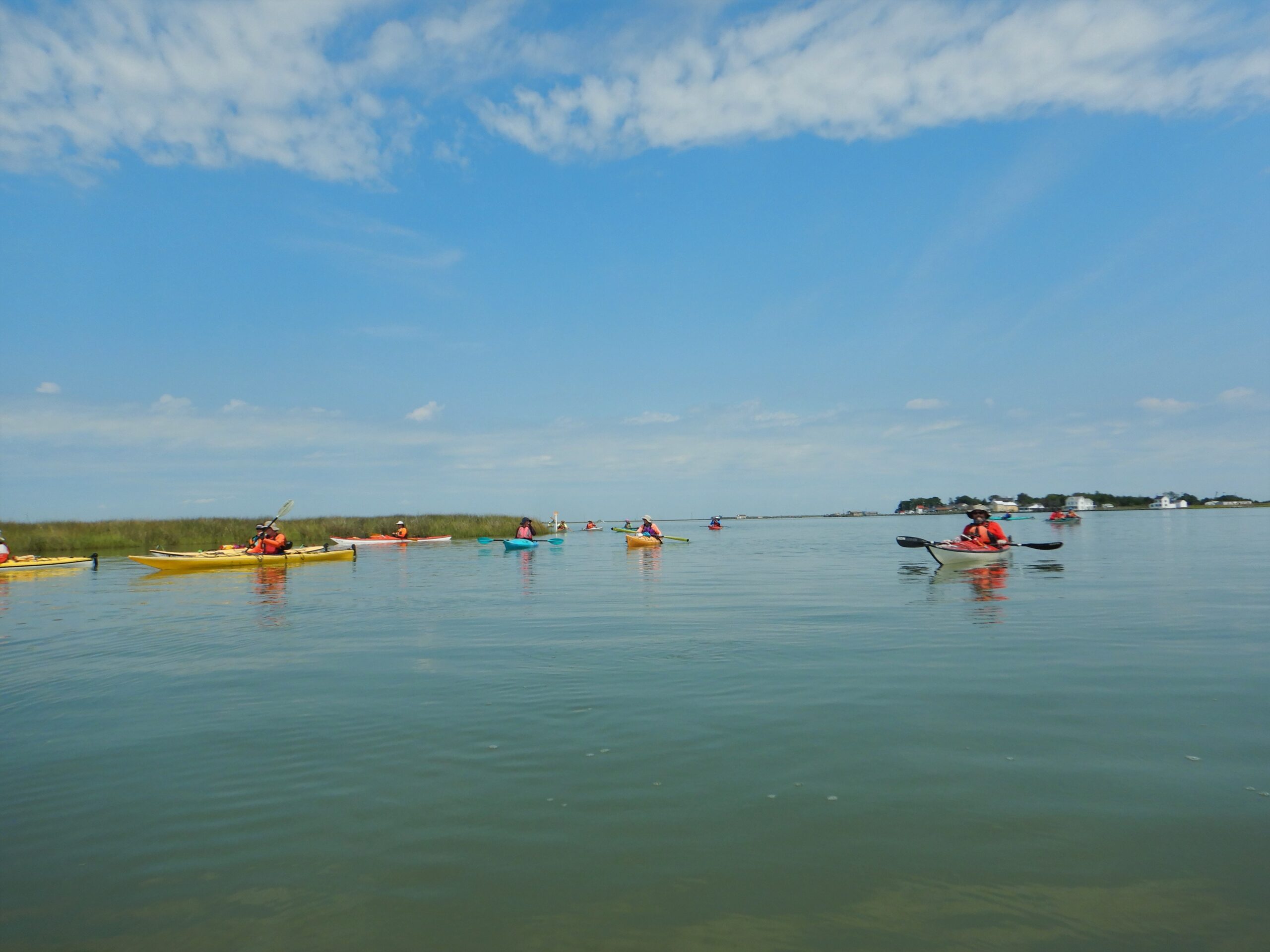
What is Leadership?
Leadership requires the ability to look at the big picture, look ahead for potential risks or hazards and plan to avoid them, and the ability to communicate effectively with your group. Remember the hierarchy of responsibility. You are responsible for yourself first. You can’t lead a group if you are uncomfortable for any reason. If the conditions are such that you feel uncomfortable, don’t go, or turn back. Make sure that you have adequate food and water. If you are hypoglycemic or dehydrated, you can’t be an effective leader. Manage your own equipment and make sure that your boat is in good repair. These are things that you should be doing whether you are leading or just being a part of a paddle group. As a leader, you can remind people to eat drink, and take care of their own comfort.
The second priority is that of the group as a whole. For larger groups it is good to have a lead paddler and a sweep paddler. These are your assistants and you should communicate your navigation plan and discuss communications with them prior to starting out. Think CLAP.
C = Communication
L = Line of Sight
A = Awareness
P = Position of Maximum Usefulness
There are variations of this acronym, but this is one that I use. Communication is essential. Before starting out on the water, communicate with the group to make sure that everyone understands how you plan to communicate on the water. This might include VHF radio protocols and the channel you will monitor. Establish paddle or whistle signals that you might use.
Line of Sight means that you have visual contact with your group. When going around a point, group up before going around. Position yourself so that you can see the group as they go past. Points are typically an area where water can become more dynamic and where currents may be stronger so be aware of hazards.
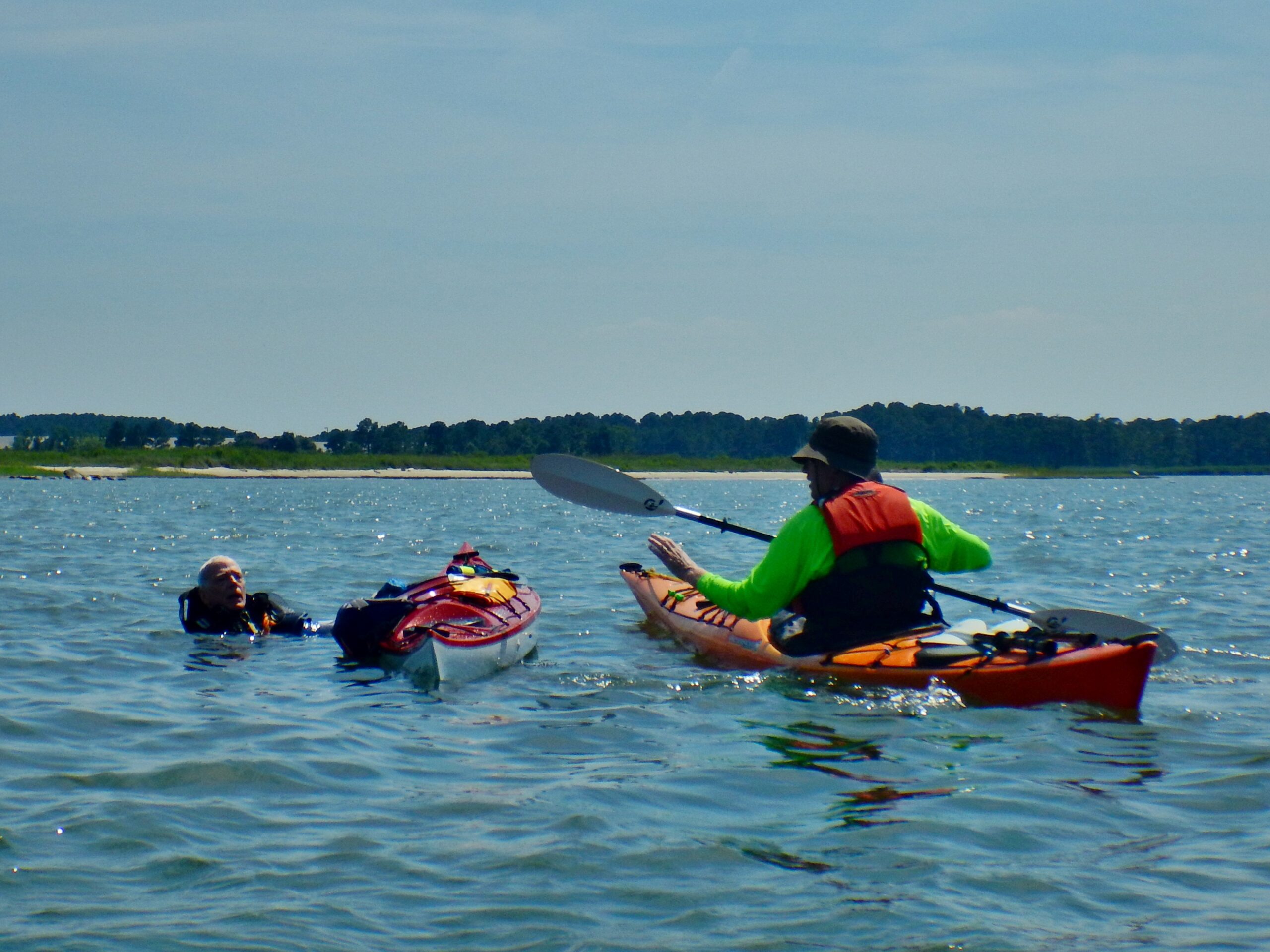
Awareness means watching the environment. Watch the sky for evidence of weather changes, be aware of changes in wind strength or direction, It also means being aware of how paddlers are doing. If a paddler who is normally chatty and tends to be in the lead becomes quiet and lags behind, something may be wrong. You should also be able to identify safe zones in case something goes wrong.
Position of maximum usefulness means that you are in a place in the group where you can be effective. The leader of the group should not be the lead paddler, you cannot see the group or be aware of what is happening towards the back. This is a position that you delegate to someone you trust and who knows the navigation plan, the pace you want to maintain, and can communicate during the paddle. When crossing a busy channel, the position of maximum usefulness may be towards the middle of the group, making sure that people line up and cross the channel together. When rounding a point, you might position yourself near the point between the paddlers and any hazards (rocks, pilings, etc.) so that paddlers go around you and avoid the hazard.
The last priority is any other individual in the group who needs assistance. If someone capsizes and wet exits, there is a tendency to focus on the swimmer. It is the leader’s responsibility to make sure that the group is in a safe position, not drifting into a channel, or out an inlet. The leader should not be doing the rescue, but should delegate someone else to perform a rescue. If you are in a hazardous area, someone else may assist you in leading the group to a safer area where you can then make sure that the rescue is proceeding safely and effectively and the rest of the paddlers are safe. If a paddler needs to be towed, delegate this to one of the stronger paddlers in the group.
Evaluate Your Group
Leading trips doesn’t mean that you need to do everything yourself. Invite people you know to help with lead and sweep, or on water safety. Identify stronger paddlers in your group who can assist when needed, and identify newer paddlers who may need assistance.
Finally, don’t be afraid to tell someone if their boat is not adequate for the paddle you are planning. For example a rec boat when you have planned an open water crossing. Don’t be afraid to tell someone if they are not dressed for the water and you are paddling in cold water conditions. You do not need to take responsibility for someone who is not prepared for the paddle you have planned. It can be hard to turn someone away, but having an incident with serious consequences could be much harder.
So go out, paddle, lead paddles, and share your love of the water. CPA depends on people who are willing to lead trips and most members are willing to assist new trip leaders get started.
Paula Hubbard
CPA Coordinator
